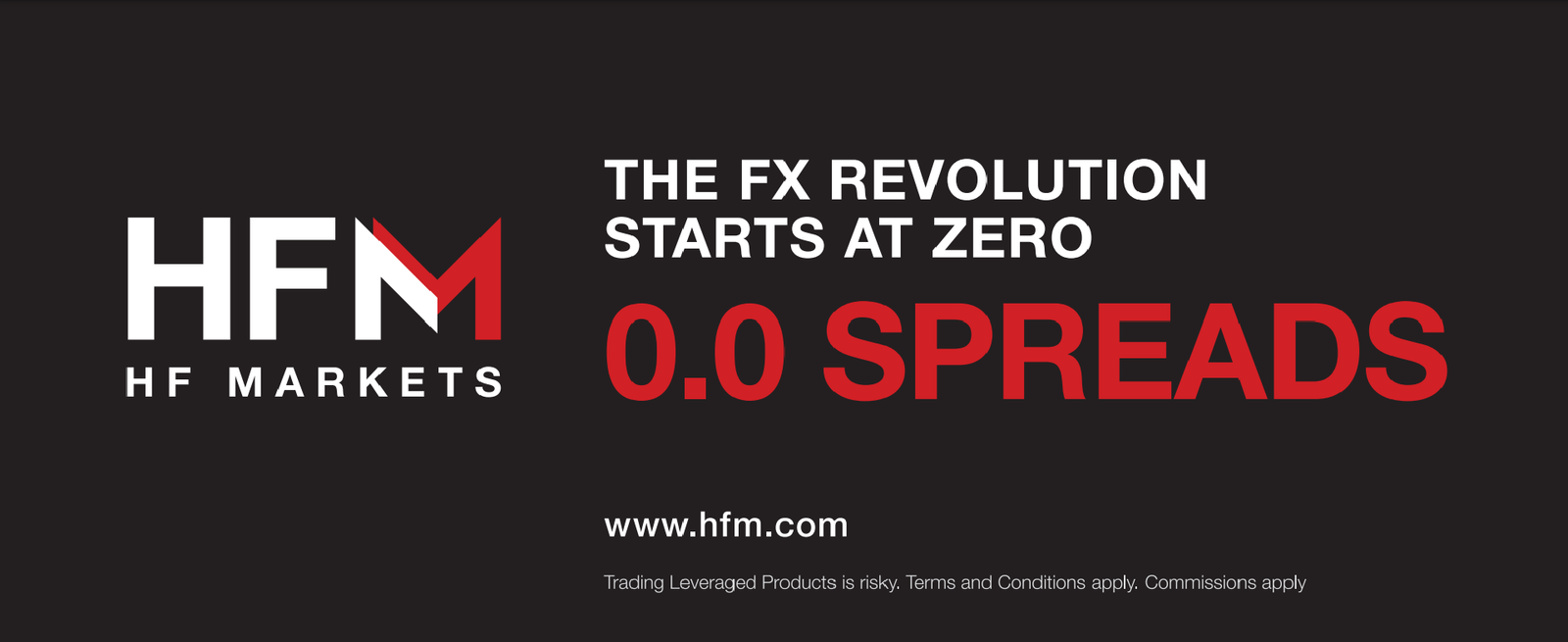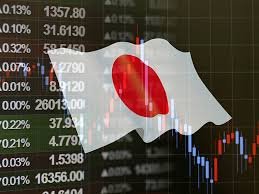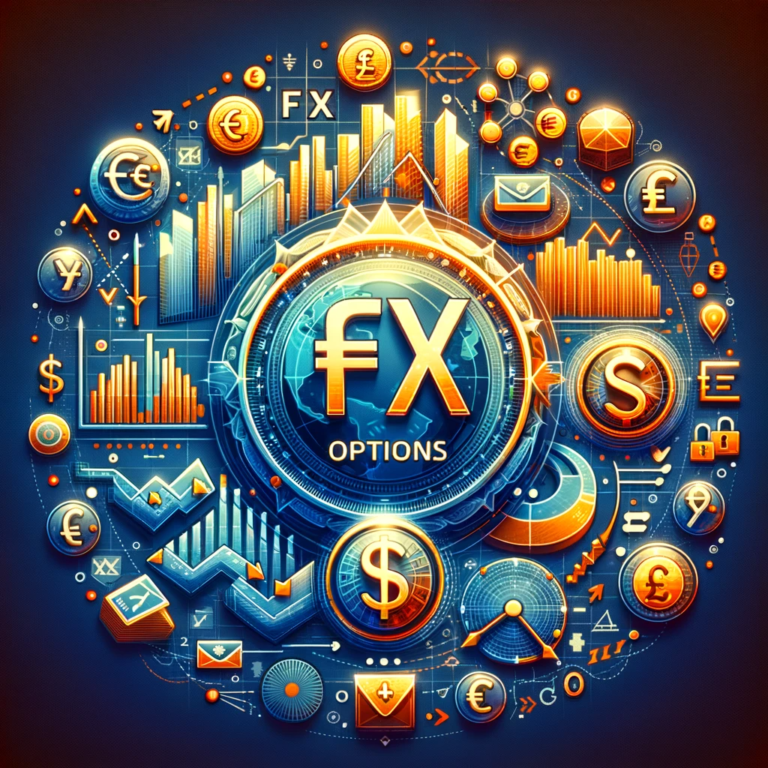Forex trading, also known as foreign exchange trading or currency trading, is the practice of buying and selling currency pairs to profit from fluctuations in exchange rates. The forex market is the largest financial market in the world, with a daily trading volume exceeding $6 trillion. It operates 24 hours a day, five days a week, facilitating trade across different time zones among financial institutions, corporations, governments, and individual traders.
Forex Trading Guide for Beginners
1. Understand the Basics
- Currency Pairs: Trades involve two currencies, known as a pair, where you sell one to buy another. For example, in the EUR/USD pair, you are trading the Euro against the US dollar.
- Major, Minor, and Exotic Pairs: Majors include currencies from the world’s largest economies. Minors involve less dominant currencies, and exotics pair a major currency with one from a smaller economy.
- Pips: The smallest price move that a given exchange rate can make based on market convention. Usually, a pip is a one-digit movement in the fourth decimal place of a currency pair.
- Leverage: Allows you to control a large position with a small amount of capital. Increases potential profits but also potential losses.
2. Choose the Right Forex Broker
- Regulation: Ensure the broker is regulated by a reputable financial authority.
- Trading Platform: Look for a user-friendly platform with robust tools and resources.
- Spreads and Fees: Compare the transaction costs among brokers to find competitive spreads.
- Customer Support: Availability of responsive customer service is crucial.
3. Develop a Trading Strategy
- Technical Analysis: Involves analyzing charts and patterns to predict future movements.
- Fundamental Analysis: Focuses on economic indicators and news events that can affect currency values.
- Risk Management: Establish how much you’re willing to risk on each trade, typically 1-2% of your trading capital.
4. Practice with a Demo Account
Most brokers offer demo accounts where you can trade virtual money in real market conditions. This is an excellent way to gain experience without risking actual capital.
5. Start Trading
- Open Your Position: Choose your currency pair, determine the size of your trade, and execute your buy or sell order.
- Monitor and Close Your Trade: Watch your trade’s performance and close it when you’re ready to lock in a profit or cut a loss.
6. Keep Learning
The forex market is dynamic, and continuous learning is crucial. Stay informed about global economic events, and always look to improve your trading skills and strategies.
Additional Tips for Success
- Emotional Control: Maintain discipline and don’t let emotions drive your trading decisions.
- Journaling: Keep a record of your trades to analyze your performance and learn from your successes and mistakes.
- Community and Resources: Engage with trading communities and utilize educational resources to enhance your understanding and skills.
Forex trading offers significant opportunities but also comes with high risk. It requires commitment, discipline, and a continuous effort to learn and adapt to market changes. Starting with a solid foundation and gradually advancing your skills and knowledge is the best approach for beginners aspiring to become successful forex traders.
What Is the Forex Market?
The Forex market, short for foreign exchange market, is a global decentralized or over-the-counter (OTC) market for trading currencies. It is the world’s largest financial market, with a vast daily trading volume exceeding $6 trillion as of the latest figures. This market enables currency conversion for international trade and investments, with participants including central banks, commercial banks, other institutional investors, corporations, governments, and retail investors.
Key Features of the Forex Market:
- 24-Hour Market: The Forex market operates 24 hours a day, five days a week, across four major time zones: Sydney, Tokyo, London, and New York. This continuous operation is due to the global nature of the economy, allowing traders from around the world to trade during normal business hours, after work, or even in the middle of the night.
- High Liquidity: Liquidity refers to the ability to buy or sell assets quickly without causing a significant movement in its price. The Forex market’s high liquidity means that large amounts of currencies can be moved in and out of the market with minimal price movement.
- Leverage: Forex markets offer significant leverage to traders, allowing them to control a large position with a relatively small amount of capital. While this can magnify profits, it also increases the risk of substantial losses.
- Market Participants: Besides the retail traders, the Forex market includes major players like national central banks, multinational corporations, financial institutions, hedge funds, and other speculative investors.
- Currency Pairs: Currencies are traded in pairs, where the value of one currency is compared against another. The first currency listed (base currency) is the one being bought or sold against the second currency (quote currency). Currency pairs are categorized into majors, minors, and exotics based on their trading volume and liquidity.
Major Functions:
- Determining Exchange Rates: The Forex market plays a crucial role in setting the exchange rates for global currencies. These rates fluctuate based on supply and demand dynamics, influenced by various factors including economic indicators, political events, and market sentiment.
- Facilitating International Trade and Business: By providing a mechanism for currency exchange, the Forex market facilitates international trade and business. Companies can hedge against currency risk by buying or selling currencies in advance, protecting themselves against adverse movements in exchange rates.
- Speculation and Investment: Many market participants engage in Forex trading with the aim of making profits from fluctuations in currency exchange rates. Speculators and investors analyze various economic and political factors to predict currency movements and execute trades accordingly.
The Forex market’s vast size, global nature, and high liquidity make it an attractive arena for investors and traders. However, the same factors that offer opportunities for profit also present potential risks, requiring participants to approach Forex trading with education, strategy, and caution.
How Does the Forex Market Work?
Key Components of the Forex Market:
- Major Participants:
- Central Banks: Influence the Forex market through monetary policy, exchange regime setting, and currency intervention.
- Banks and Financial Institutions: Act as the largest traders, dealing in billions of dollars of currency transactions daily.
- Corporations: Participate for business operations, needing to convert profits made abroad into their domestic currency or to hedge against currency risk.
- Retail Forex Traders: Individuals trade through platforms provided by brokers, speculating on currency movements to make profits.
- Trading Platforms:
- Forex trading is facilitated by brokers offering electronic trading platforms where individuals and institutions can place trades. These platforms provide real-time quotes, charting tools, and news feeds.
- Currency Pairs:
- Currencies are traded in pairs, for example, EUR/USD. The first currency (EUR) is the base currency that is being bought or sold against the second currency (USD), the quote currency.
How Trades Are Made:
- Choosing a Currency Pair:
- Traders select a currency pair they expect to change in value and decide whether to buy (go long) or sell (go short).
- Execution:
- Trades are executed through a trading platform, where traders can enter or exit the market at practically any time during trading hours.
- Leverage:
- Brokers provide leverage, allowing traders to control large positions with a relatively small amount of invested capital. This amplifies both gains and losses.
- Spreads and Costs:
- The difference between the buying price and selling price (spread) is typically the main cost of trading, aside from any commissions or fees.
Pricing and Influencing Factors:
- Supply and Demand: Prices in the Forex market are influenced by supply and demand, affected by economic indicators, interest rates, political conditions, and market sentiment.
- Interest Rates: Central bank interest rate decisions can cause currency prices to move. Higher interest rates offer lenders in an economy a higher return relative to other countries, attracting foreign capital and causing the currency to appreciate.
- Economic Data: Reports such as GDP growth, employment numbers, and inflation rates can influence market perceptions about the health of an economy and impact currency values.
- Political Stability and Performance: Countries with less risk for political turmoil are more attractive to foreign investors, as a result, drawing investment away from countries with more political and economic stability issues, affecting currency strength.
Market Analysis:
Traders analyze the market using two main approaches:
- Technical Analysis: Involves studying price charts and using statistical figures to predict future price movements based on past patterns.
- Fundamental Analysis: Looks at economic indicators, news events, and financial statements to determine the strength or weakness of an economy and its currency’s future movement.
The Forex market’s complexity and dynamism require traders to be well-informed and strategic. Successful trading involves understanding market indicators, managing risk, and making educated decisions based on current economic and political landscapes.
Where Is It?
How the Forex Market Operates Globally:
- Decentralized Nature: The Forex market is considered decentralized because it runs across a network of computers, rather than through a single exchange. This network spans across major financial hubs in cities like London, New York, Tokyo, Zurich, Frankfurt, Hong Kong, Singapore, Paris, and Sydney.
- Global Financial Centers: These cities act as trading anchors for different time zones, allowing the Forex market to remain open 24 hours a day during weekdays. The market opens in Sydney, then moves across the globe with the beginning of the business day in each financial center, from Tokyo to London to New York.
- Electronic Over-the-Counter (OTC) Market: Trades are conducted directly between parties via electronic networks or by phone, rather than on a regulated exchange platform.
- Market Participants: They include large banks, central banks, institutional investors, currency speculators, corporations, governments, other financial institutions, and retail investors. They are all connected through this vast electronic network, enabling them to buy and sell currencies.
In essence, the Forex market exists wherever participants are trading currencies. It’s a truly global market, reflecting the interconnectedness of the modern world’s economy and financial systems.
How to Start Trading Forex?
1. Learn the Basics of Forex Trading
- Understand the Market: Learn about how the Forex market works, including currency pairs, the bid-ask spread, and how to interpret Forex quotes.
- Familiarize Yourself with Trading Terms: Pips, lots, leverage, and margin are all fundamental concepts you need to understand.
2. Choose a Reliable Forex Broker
- Regulation: Ensure the broker is regulated by a reputable authority to protect your investments.
- Trading Platform: The broker should offer a trading platform that you find intuitive and easy to use.
- Account Features: Look at leverage options, spreads, commissions, and whether the broker offers a demo account for practice.
3. Open and Fund a Trading Account
- Documentation: You will need to provide some personal information and identification for account setup.
- Funding: Deposit funds into your account using one of the methods provided by the broker.
4. Start with a Demo Account
- Practice Trading: Use the demo account to familiarize yourself with the trading platform and to practice trading without risking real money.
- Develop a Strategy: Experiment with different trading strategies to see what works best for you.
5. Develop a Trading Plan
- Risk Management: Determine how much of your capital you are willing to risk on each trade, typically recommended to be no more than 1-2%.
- Trading Strategy: Decide on the criteria that will signal your entry and exit points. This could be based on technical analysis, fundamental analysis, or a combination of both.
- Goals: Set clear, achievable goals for your trading activities, such as a specific return on investment or learning objective.
6. Analyze the Market
- Technical Analysis: Use charts and indicators to predict future currency movements based on past patterns.
- Fundamental Analysis: Consider economic indicators, news, and other macroeconomic factors that can influence currency values.
7. Start Trading
- Open a Position: Choose a currency pair, decide on the size of your trade (in lots), and whether you want to buy or sell.
- Monitor the Market: Stay informed about market developments and adjust your strategies as necessary.
- Close the Position: Exit the trade according to your plan to either take profits or cut losses.
8. Review and Reflect
- Analyze Your Trades: Regularly review your trades to learn from your successes and mistakes.
- Adjust Your Plan: As you gain experience, you might find ways to improve your trading plan and strategies.
9. Stay Informed and Keep Learning
- Continuous Education: The Forex market is dynamic, and staying informed about financial news and market trends is crucial.
- Adaptation: Be prepared to adapt your strategies and plans as you gain experience and as market conditions change.
10. Be Patient and Disciplined
- Emotional Management: Forex trading can be stressful, and emotional decisions can lead to losses. Practice patience and discipline in your trading decisions.
Starting Forex trading involves careful preparation and a willingness to learn and adapt. By following these steps, you can set a solid foundation for your trading journey. Remember, successful trading takes time, practice, and continuous learning.
What is Basic Forex Trading Strategies?
Forex trading strategies are crucial for every trader looking to make consistent profits in the currency market. These strategies range from basic to advanced and can vary widely in their approach to analyzing and executing trades. Here’s an overview of some basic Forex trading strategies that can help beginners start on the right foot:
1. Trend Trading Strategy
Trend trading involves identifying and following the direction of the market trend. Traders use various indicators to determine the trend’s direction (upward, downward, or sideways) and make trades based on the expectation that the trend will continue.
- Key Tools: Moving averages, MACD (Moving Average Convergence Divergence), and trend lines.
- Approach: Buy in an uptrend when prices pull back to a support level, and sell in a downtrend when prices bounce back to a resistance level.
2. Range Trading Strategy
Range trading strategy is best used in markets that are not trending and involves identifying stable high and low points at which to buy or sell. Traders capitalize on the currency pair’s movement within a defined range.
- Key Tools: Support and resistance levels, stochastic oscillators, and RSI (Relative Strength Index).
- Approach: Buy at the support level and sell at the resistance level within the range.
3. Position Trading
Position trading is a long-term strategy focused on fundamental factors, but technical analysis can also play a key role. Traders hold positions for weeks, months, or even years, aiming to profit from major shifts in currency prices.
- Key Tools: Long-term charts (daily, weekly), fundamental analysis.
- Approach: Analyze the macroeconomic environment and underlying economic trends to make trades that might only see a payoff over the long term.
4. Scalping
Scalping is a strategy that involves making a large number of small profits on minor price changes. This strategy requires a strict exit strategy because one large loss could eliminate the many small gains the trader worked to obtain.
- Key Tools: Tick charts, real-time news updates.
- Approach: Make quick trades to capture a few pips of profit at a time, focusing on the speed of trade execution and exploiting short-term market movements.
5. Day Trading Strategy
Day trading involves entering and exiting positions within the same trading day. Traders avoid the risk of large overnight movements by closing out at the end of the day.
- Key Tools: Intraday candlestick charts, volume indicators, and momentum indicators.
- Approach: Identify intraday trends and use tight stop losses to minimize risk.
6. Carry Trade Strategy
The carry trade involves borrowing (or selling) a currency with a low-interest rate and using the funds to purchase (or buy) a currency yielding a higher interest rate, profiting from the interest differential.
- Key Tools: Interest rate differentials, economic forecasts.
- Approach: Go long on currencies with high-interest rates and short on those with low rates, capitalizing on the global interest rate spread.
Implementing Basic Strategies
When implementing these strategies, it’s crucial to:
- Use a Demo Account: Practice with a simulated trading account to hone your strategy without financial risk.
- Risk Management: Always use stop-loss orders and manage your risk exposure per trade.
- Continuous Learning: Stay informed about market conditions, news, and developments that can affect currency movements.
- Patience and Discipline: Successful trading is not about making a profit from every trade but about consistent performance over time.
Beginners should start with strategies that match their trading style, capital availability, risk tolerance, and market understanding. As you gain experience, you can explore more complex strategies and tailor them to suit your trading goals.
what is the Charts used in Forex Trading?
1. Line Charts
A line chart is the simplest form of Forex chart and is created by connecting a series of closing prices over a specific time period. The line represents the general price movement of a currency pair, providing a clear view of the market’s direction over time.
- Pros: Simplicity, good for identifying overall trends.
- Cons: Lacks detailed information on price behavior within the period (open, high, low).
2. Bar Charts
Also known as “OHLC” (Open, High, Low, Close) charts, bar charts provide more information than line charts. Each bar represents the trading range for a given period, with a horizontal line on the left showing the opening price and a horizontal line on the right showing the closing price. The top of the bar indicates the highest price traded, while the bottom shows the lowest price.
- Pros: Offers more detailed information about market sentiment and potential reversals.
- Cons: Can be cluttered and harder to interpret for beginners compared to line charts.
3. Candlestick Charts
Candlestick charts offer a visually detailed representation of price movements, showing the open, high, low, and close prices for each period. The main body (or “real body”) of the candlestick shows the opening and closing prices, while the “wicks” or “shadows” represent the high and low prices. Candlesticks can be colored (commonly green for a close higher than the open and red for a close lower than the open) to provide quick visual cues about market behavior.
- Pros: Rich in information, allowing for the analysis of market psychology and potential price movements.
- Cons: May take time to learn and interpret various candlestick patterns effectively.
4. Heikin-Ashi Charts
Heikin-Ashi charts are a variation of candlestick charts that use average price data to filter out market noise, making it easier to identify trends. These charts use modified open, high, low, and close prices and tend to produce a smoother chart, highlighting the direction of the trend more clearly.
- Pros: Reduces market noise, making it easier to identify trends and reversals.
- Cons: Because it uses average price data, there can be a delay in price signals.
5. Renko Charts
Renko charts focus on price movement and filter out minor price changes, ignoring time and volume. Each “brick” represents a movement of a specific price amount, and new bricks are only added when the price moves by that predetermined amount. This makes trends easier to spot and trade.
- Pros: Simplifies the market, making it easier to see trends and reversals.
- Cons: Ignores time, so it may not reflect the pace at which price changes occur.
6. Point and Figure Charts
Point and figure charts are designed to highlight only significant price movements, disregarding the time element entirely. This chart type uses columns of X’s (rising prices) and O’s (falling prices) and is not as commonly used as the other chart types.
- Pros: Filters out insignificant price movements, highlighting only major trends.
- Cons: The lack of time and volume data can make it difficult to gauge the context of price movements.
Choosing the Right Chart
The choice of chart depends on your trading style, objectives, and which aspects of price movement you find most informative. Most traders start with candlestick charts due to the depth of information provided but may use other types for specific strategies or analysis needs. Understanding each chart type’s nuances allows traders to more accurately interpret data and make informed decisions in the dynamic Forex market.
Are Forex Markets Volatile?
1. Economic Data Releases
Economic indicators such as employment rates, inflation, GDP growth, and manufacturing output can significantly impact currency values. Traders closely watch these releases, and currencies can move sharply in response to new data.
2. Central Bank Policies
Decisions by central banks on interest rates, monetary policy, and economic forecasts can cause immediate reactions in the Forex market. Announcements regarding interest rate changes or economic outlook can lead to significant volatility.
3. Political Events
Elections, political instability, changes in government, and geopolitical events can cause uncertainty, leading to fluctuations in currency values. For example, Brexit had a profound impact on the British Pound’s volatility.
4. Market Sentiment
Trader perceptions and speculative actions can also drive market volatility. For instance, if traders collectively move based on a prediction or a trend, it can cause significant price movements.
5. Global Events
Natural disasters, pandemics, and other unforeseen global events can lead to sudden and extreme volatility in the Forex market as they impact economic conditions and investor confidence.
Managing Volatility
Traders and investors use various strategies to manage and potentially profit from Forex market volatility:
- Technical Analysis: Using charts and historical data to identify patterns that may indicate future movements.
- Fundamental Analysis: Evaluating economic indicators, central bank policies, and other fundamental factors to make informed trades.
- Risk Management: Implementing stop-loss orders, diversifying currency pairs, and limiting exposure to manage potential losses due to volatility.
While volatility can present opportunities for profit, it also increases the risk of trading. Successful Forex traders often have a deep understanding of the factors that drive market movements and have strategies in place to manage the risks associated with volatility.
Are Forex Markets Regulated?
Key Regulatory Bodies
Some of the most prominent regulatory authorities in major financial markets include:
- United States: The Commodity Futures Trading Commission (CFTC) and the National Futures Association (NFA) regulate the Forex market.
- United Kingdom: The Financial Conduct Authority (FCA) oversees Forex trading.
- European Union: Regulation varies by country, but the European Securities and Markets Authority (ESMA) provides overarching guidance. Individual countries have their own regulators, such as the Bundesanstalt für Finanzdienstleistungsaufsicht (BaFin) in Germany and the Autorité des Marchés Financiers (AMF) in France.
- Australia: The Australian Securities and Investments Commission (ASIC) regulates Forex trading.
- Canada: Forex regulation is done on a provincial basis. The Investment Industry Regulatory Organization of Canada (IIROC) is a significant regulatory body.
- Japan: The Financial Services Agency (FSA) oversees the Forex market.
Role of Regulatory Bodies
The primary roles of these regulatory bodies include:
- Licensing: Regulators ensure that Forex brokers and financial institutions meet certain standards before they can offer their services to the public.
- Compliance: They monitor the compliance of these entities with financial laws and regulations, including anti-money laundering (AML) and know your customer (KYC) policies.
- Protection: Regulatory bodies work to protect investors from fraud, manipulation, and abusive trade practices.
- Market Integrity: They help maintain fair and orderly markets and foster transparency in financial transactions.
Importance of Trading with a Regulated Broker
For traders, choosing a regulated broker is crucial for several reasons:
- Safety of Funds: Regulated brokers are often required to keep client funds in segregated accounts, separate from their own operational funds.
- Dispute Resolution: Traders have access to a regulatory authority for dispute resolution if they have complaints against a broker.
- Transparency: Regulated brokers are required to provide clients with clear information about trading costs, risks, and conflicts of interest.
While regulation provides a layer of protection, traders should also conduct their own due diligence when choosing a broker, including verifying the broker’s regulatory status, reviewing their trading conditions, and understanding the risks involved in Forex trading.
Which Currencies Can I Trade in?
1. Major Currencies
These are the most traded currencies in the world, known for their liquidity and lower spreads. They are associated with stable, well-established economies and are frequently traded against each other. The major currencies include:
- U.S. Dollar (USD)
- Euro (EUR)
- Japanese Yen (JPY)
- British Pound (GBP)
- Australian Dollar (AUD)
- Canadian Dollar (CAD)
- Swiss Franc (CHF)
- New Zealand Dollar (NZD)
The EUR/USD, USD/JPY, and GBP/USD pairs are among the most traded Forex pairs globally, often referred to as the “majors.”
2. Minor Currencies
These currencies are from smaller or emerging economies and are less frequently traded compared to the majors. They are also known as “cross-currency pairs” when traded against each other without the USD. Examples include:
- Swedish Krona (SEK)
- Norwegian Krone (NOK)
- Danish Krone (DKK)
- Polish Zloty (PLN)
Crosses between major currencies, such as EUR/GBP or AUD/JPY, are also considered part of this category and can offer interesting trading opportunities beyond the major pairs.
3. Exotic Currencies
Exotic currencies are associated with developing or smaller economies. They are traded less frequently than major or minor currencies and typically have less liquidity and higher spreads. Exotic pairs often include one major currency and one from an emerging or a small economy, such as:
- Turkish Lira (TRY)
- South African Rand (ZAR)
- Brazilian Real (BRL)
- Russian Ruble (RUB)
- Indian Rupee (INR)
Trading exotic currencies can be riskier due to their higher volatility and susceptibility to political and economic instability. However, they can also provide significant profit opportunities for knowledgeable traders.
How to Choose Which Currencies to Trade
Choosing which currencies to trade depends on several factors, including your trading strategy, risk tolerance, market knowledge, and the economic and geopolitical situation affecting those currencies. Here are a few considerations:
- Volatility: Major currencies tend to be less volatile than exotics. Choose based on your risk tolerance.
- Spread Costs: Trading major pairs usually results in lower transaction costs due to tighter spreads.
- Market Hours: Consider trading times for specific currency pairs, especially if trading minor or exotic currencies whose markets may be more active during certain hours.
- Economic Events: Be aware of economic calendars as events like central bank meetings, economic data releases, and elections can significantly impact currency values.
Regardless of which currencies you decide to trade, it’s essential to conduct thorough research, stay informed on global economic news, and apply sound risk management practices.
The Bottom Line
The bottom line in Forex trading is that while it offers significant opportunities for profit due to its high liquidity, 24-hour trading, and the use of leverage, it also comes with a high level of risk. To navigate the complexities of the Forex market successfully, traders need to develop a comprehensive understanding of market dynamics, currency pairs, and the factors that influence exchange rates. Here are some key takeaways for anyone considering or currently engaging in Forex trading:
Education is Crucial
Invest time in learning about the Forex market, including its structure, the major and minor currency pairs, and how economic, political, and market sentiment can affect currency movements. Continuous learning and staying updated on global economic news are essential for making informed trading decisions.
Develop a Solid Trading Strategy
A well-thought-out trading strategy that includes clear entry, exit, and money management rules is vital for success. Whether it’s trend trading, day trading, scalping, or another strategy, consistency and discipline in following your plan can help manage risk and capitalize on opportunities.
Risk Management
Due to the volatile nature of the Forex market, implementing effective risk management techniques is crucial. This includes setting stop-loss orders, only risking a small percentage of your trading capital on a single trade, and being aware of how leverage can amplify both gains and losses.
Use Technology to Your Advantage
Leverage trading platforms and tools for market analysis, such as technical indicators and economic calendars. Demo accounts can be invaluable for practicing trading strategies without risking real money.
Regulatory Compliance
Trade with a regulated broker to ensure the safety of your funds, fair trading practices, and access to recourse in case of disputes. Check the broker’s regulatory status and compliance with financial authorities.
Emotional Discipline
Forex trading can be emotionally challenging. Successful traders learn to control their emotions, avoiding impulsive decisions based on fear or greed. Developing a trading plan and sticking to it can help maintain discipline.
Understand the Costs
Be aware of the costs associated with Forex trading, including spreads, commissions, and swap/rollover fees for holding positions overnight. These can affect your trading profitability.
Start Small and Be Patient
Begin with a small amount of capital and gradually increase your exposure as you gain experience and confidence. Forex trading requires patience and persistence to develop the skills and knowledge necessary for long-term success.
Diversification
Consider diversifying your trading portfolio to spread risk. This can involve trading multiple currency pairs or incorporating other asset classes into your investment strategy.
In conclusion, Forex trading is not a shortcut to instant wealth but a sophisticated financial activity that requires skill, discipline, and a strategic approach. By focusing on education, strategic planning, and risk management, traders can better position themselves to navigate the highs and lows of the market.




